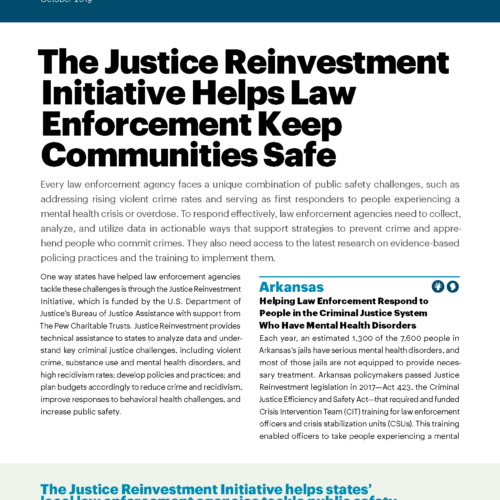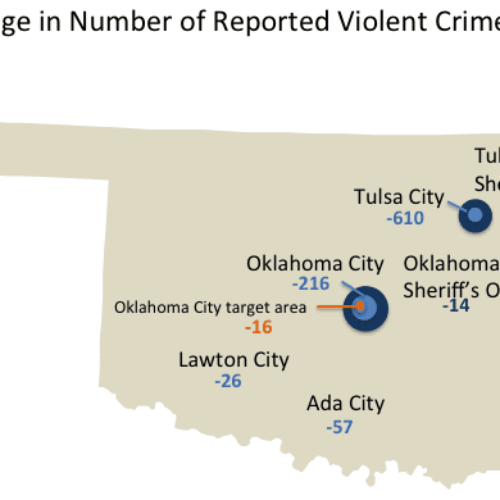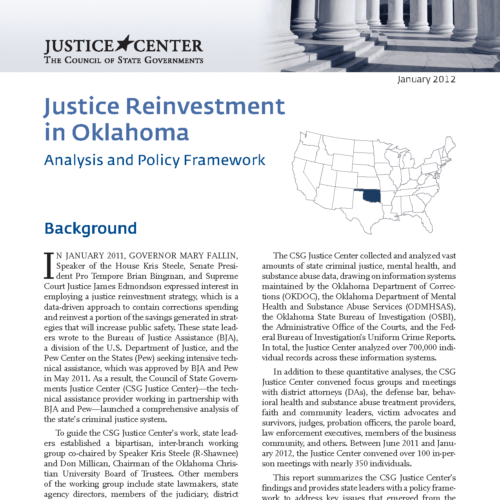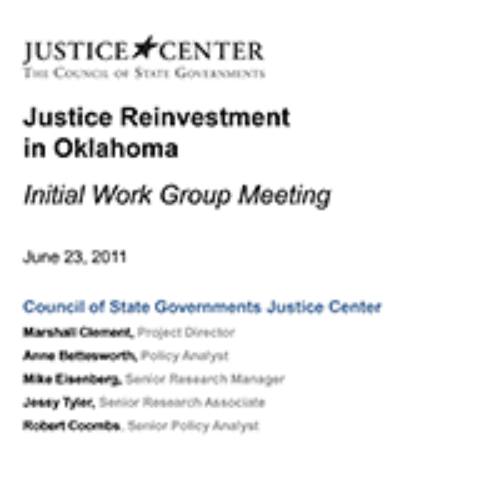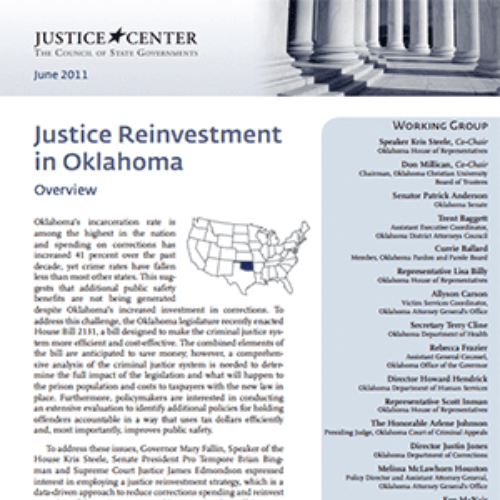Justice Reinvestment in Oklahoma
The Problem
In 2010, Oklahoma’s violent crime rate was high and had remained relatively unchanged since 2000. Further, more than half of people leaving prison were released without supervision. The state’s prison population grew faster than the state’s resident population over the prior decade, and during that same period corrections appropriations increased 30 percent.
How JRI Helped
From 2011 to 2012, the CSG Justice Center worked with Oklahoma state leaders to analyze criminal justice data, interview stakeholders from across the criminal justice system, and develop data-driven policy options designed to reduce corrections spending and increase public safety.
Signed into law in 2012, Oklahoma’s Justice Reinvestment legislation, House Bill 3052
- Established a new state-funded grant program to assist local law enforcement agencies in implementing data-driven strategies to reduce violent crime;
- Instituted a presentence risk and needs screening process to help guide sentencing decisions related to treatment and supervision;
- Mandated supervision for all adults released from prison; and
- Created more cost-efficient and meaningful responses to supervision violations.
Implementation and Impacts
These policies were projected to mitigate the state’s growth in prison population by 1,759 people and were projected to save up to $120 million over 10 years. By 2018, the state was almost halfway toward that goal, when an additional Justice Reinvestment Initiative project launched. Oklahoma reinvested a total of $8.4 million to support the JRI effort, including $1.7 million in supervision and a presentence risk and needs screen, approximately $2 million in funding for a grant program to reduce violent crime, and $1.8 million in law enforcement grants.











